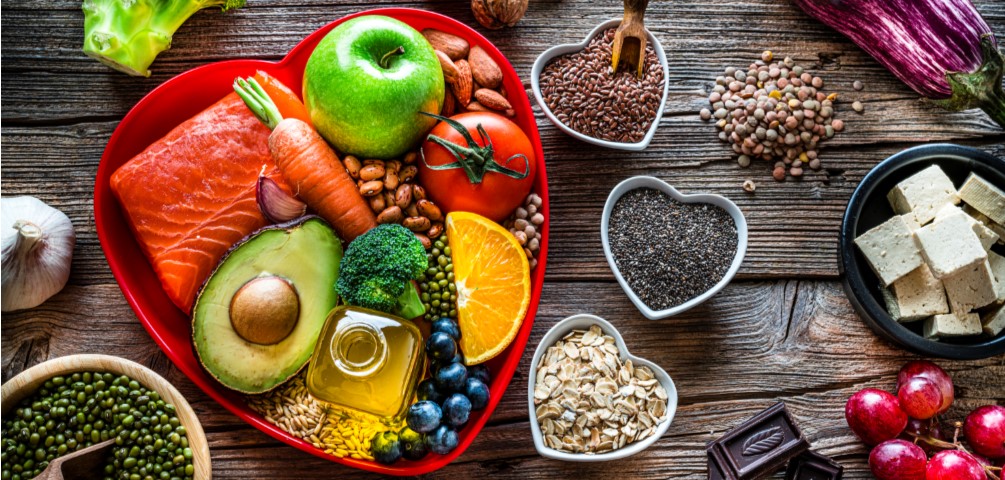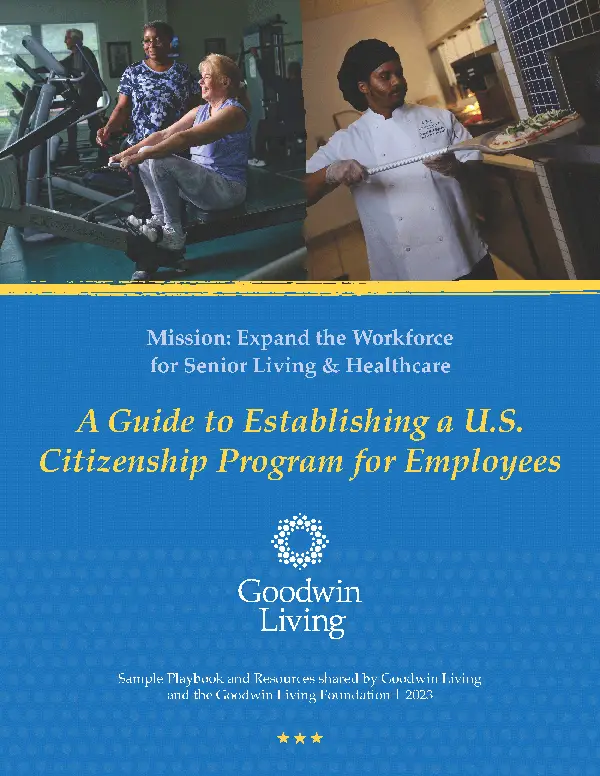
Live Comfortably - February 25, 2021
By Amanda Ranowsky
As we recognize American Heart Month, we’re taking a look at the holistic aspects of heart health that we should be mindful of in order to keep our tickers in tip-top shape.
Heart disease is the leading cause of death in the United States. And according to the National Institute on Aging, “People age 65 and older are much more likely than younger people to suffer a heart attack, to have a stroke, or to develop coronary heart disease (commonly called heart disease) and heart failure. Heart disease is also a major cause of disability, limiting the activity and eroding the quality of life of millions of older people.”
Several factors such as age, sex and family history contribute to your specific risk of developing heart disease. These are factors that you cannot change, but what about other factors that are in your control?
“Eating healthy, being active and having a healthy weight – all of these components help you to have better heart health,” said Saba Barkneh, RDN, one of two Goodwin Living dietitians who provide their expertise to residents of our two Goodwin Living Life Plan Communities, members of Goodwin Living At Home and the organization’s nearly 900 employees. Saba continued, “These are the risk factors for heart disease that you can control.”
I spoke with Saba and fellow Goodwin Living dietitian Alison Liggett, RD, CSG, to get some of their top recommendations for building a heart-healthy diet.
One key aspect of heart health is nutrition. What you feed your body has an impact on much more than your waistline. “What you’re eating directly impacts your heart health,” said Alison. “If your heart isn’t strong, you’re more likely to get a multitude of diseases.”
As we all know, good nutrition starts with a favorite four-letter word: diet!
According to the Dietary Guidelines for Americans released in 2020 by the USDA, the core elements that make up a healthy dietary pattern include vegetables of all types, fruits, grains, low-fat or fat-free dairy, proteins (including lean meats and plant-based proteins) and oils. Saba and Alison both point to the aspects of these guidelines that make them particularly heart-healthy: the focus on plant-based foods, whole grains, low fats and limited added sugars.
“When you look at the dietary guidelines for Americans, it shows that most aren’t getting enough fruits and vegetables. The focus is on trying to get people to consume more fruits and vegetables, and consume more of the healthy fatty fishes and nuts and seeds and plant-based proteins,” said Alison. “Also having whole grains – brown rice over white rice, whole wheat bread over white bread – these small changes increase your fiber, which is very beneficial to keeping your heart healthy.”
Alison and Saba both recommend a heart-healthy diet that aligns with guidance provided by the National Heart, Lung and Blood Institute (NHLBI): limit your intake of salt, saturated and trans fats, added sugars and alcohol – the “big five” areas to limit to take care of your heart. These can all contribute, directly or indirectly, to increasing your cholesterol and blood pressure – two factors that make a significant contribution to heart health.
Let’s explore a few of these areas further.
Saturated fat and trans fat are known as the “unhealthy” fats. These types of fats are deemed unhealthy because they raise cholesterol levels. Saturated fats can raise both high-density lipoprotein (HDL or “good”) cholesterol and low-density lipoprotein (LDL or “bad”) cholesterol, with the overall buildup increasing your risk of cardiovascular disease. Trans fat is especially harmful because it raises LDL cholesterol and lowers HDL cholesterol.
Cholesterol is a waxy substance made by the liver that circulates in our blood, helping our bodies to build cells and make vitamins and other hormones. Too much LDL cholesterol can lead to a buildup of the substance in your arteries, which causes them to narrow and can lead to heart disease or stroke. HDL cholesterol actually helps to remove excess cholesterol from your arteries, so having a higher HDL level and a lower LDL level is ideal.
What does this mean for your diet?
“Less meat and more plant-based foods,” said Saba. “Plant-based foods are higher in fiber, vitamins and minerals. They will help to lower blood pressure and weight as well. We know that animal fat, even if it’s lean, is still going to come with extra calories and cholesterol.”
There’s a simple swap you can make for the flavor that fats contribute to a dish. “In cooking, just focus on herbs and spices versus fat,” said Saba. “If you’re trying to cut back on the fat in cooking, using lots of herbs and spices and garlic gives you a lot of flavor, and doesn’t need as much fat.”
Saba and Alison also recommend increasing your fiber intake. “Fiber does help to remove cholesterol – it binds to the “bad” cholesterol and helps to remove it from your system,” said Saba. Alison agreed. “The more fiber that you’re getting through fruits and vegetables and the less saturated fats, all that will all affect your heart health,” she said.
We all find ourselves tempted to add a dash of salt to our plates after the food has been prepared and dished up for us. But before you reach for that shaker of salt, think of your heart!
“Too much sodium affects your blood pressure, which increases your chances of having a heart attack or heart disease,” said Saba.
Fun fact – the words “sodium” and “salt” are often used interchangeably, but are not the same thing. Sodium is an essential mineral that is a component of salt (sodium chloride). It can be added on its own for flavor or as a preservative. It is commonly used in processed foods to thicken them, enhance their flavor or preserve them. The USDA recommends limiting your sodium intake to less than 2,300 mg per day, or the amount of sodium in one teaspoon of salt
You can reduce the amount of sodium in your diet by reducing your consumption of processed foods, which often have extra sodium added to them. Read the nutrition label on packaged foods and choose low sodium options when available, or consider making your own version of the dish at home, where you have more control over how much salt you’re adding.
Making changes to your diet might seem intimidating, but don’t let the perfect be the enemy of the good. “Make small changes and stick with them,” said Saba. “It doesn’t have to be major. Focus on simply eating more plant-based foods.”
“Have fun in the kitchen,” suggested Alison. “Buy something that you’ve never tried. Do you see a new fruit or vegetable in the grocery store that you’ve never used before? Buy it and try to find a way to use it, and it can be more interesting. Experiment with different whole grains and spices.”
There are many simple swaps you can make to easily transition toward a heart-healthy diet. Instead of red meats (even lean cuts are high in saturated fats), try lean poultry or fish (salmon, trout and tuna are high in good omega-3 fatty acids). Swap full-fat dairy products for low-fat or plant-based alternatives. Trade white rice for brown rice and regular pasta for whole wheat pasta or even spaghetti squash.
It can be hard to change the foods you’ve always eaten. Some people can never get used to the taste and texture of whole wheat pasta after a lifetime of regular pasta. “If there’s something you know you’re not going to be able to change, that’s fine,” said Alison. “Focus on adding in more of the other items that maybe you haven’t eaten before.”
Saba agreed. “Work around what you like and capitalize on where you can make a change,” she said.
Saba and Alison shared more tips and tricks in a webinar they hosted on February 12, 2021. Watch as they discuss heart-healthy foods with Goodwin Living Culinary Innovation & Development Chef Brian Patterson as he demonstrates how to make heart-healthy Vietnamese Spring Rolls!
________________________
As Marketing & Communications Specialist, Amanda Ranowsky partners with colleagues throughout Goodwin Living Incorporated to tell our stories and raise brand awareness. From printed collateral to digital marketing, Amanda covers many bases. Before joining GHI, Amanda worked for a small, family-owned business where she gained experience in content marketing. Amanda’s creative expression extends beyond the office. She is an active member of community theater and chorus groups.
